The days are rapidly counting down until Air Canada plans to launch their brand-new loyalty program in mid-2020.
For now, we’ve heard a few snippets of what we can expect from the new program, but there are still many questions on our minds as we consider what to do with our Aeroplan miles in the short- to medium-term future, especially as the program continues to gradually recover from the “noise” relating to the Amadeus PSS migration.
In this article, I wanted to summarize eight key elements of the new program that we, as the Canadian Miles & Points community, will be watching closely as we learn more and more details in the coming months. In my view, how Air Canada decides to arrange the puzzle pieces in these eight respects will play a crucial role in determining the strength and value of the new loyalty program.
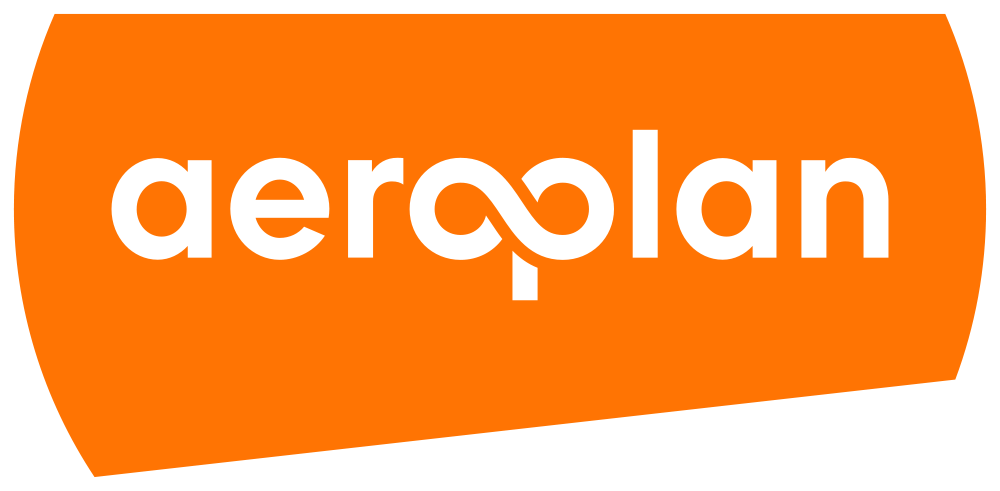
In This Post
- What We Know So Far
- 1. Dynamic North American Redemptions
- 2. New International Award Chart
- 3. Stopover Policy & Custom Routings
- 4. Call Centre
- 5. Online Search Engine
- 6. Fuel Surcharges
- 7. Elite Status Program
- 8. Co-Branded Credit Cards
- Conclusion
What We Know So Far
As a reminder, we already know a few preliminary details about the new program, including:
-
All existing Aeroplan miles will be honoured 1:1 in the new Air Canada loyalty program
-
The program will adopt a two-pronged approach to redeeming miles for flights – a more dynamic redemption structure for North American flights, and a fixed chart for international and partner flights (including in premium cabins) – to reflect the different underlying economics of both types of redemptions
-
The suspension of the second stopover on round-trip redemptions in September 2019 was temporary; the ability to have a second stopover will be returning with the new program
-
TD, CIBC, and American Express will continue to issue co-branded credit cards; furthermore, Amex MR points will continue to be transferrable into the new program
You can also watch my YouTube video in which I sit down and explain the first details we know about the new program, based on my conversations with Mark Nasr, the head of Aeroplan, a while back.
1. Dynamic North American Redemptions
As I understand it, flights within continental North America currently account for a majority of Aeroplan redemptions, and the heavy load factors on North American flights has resulted in members not always being able to find seats on their preferred itineraries at the Fixed Mileage Flight Rewards level.
Those are the underlying economics driving Air Canada to essentially implement Market Fare-style pricing on the intra-North America redemptions, allowing almost every seat to be available for a redemption. The caveat, of course, is that the pricing would be determined by a sliding scale that more accurately tracks the cash price, compared to the fixed chart that we currently have (and the many sweet spots, like the Aeroplan short-haul sweet spot, that result).
I’ll be very curious to see what this sliding scale looks like in practice. Air Canada has mentioned that they place an emphasis on upholding trust and transparency in the new program, so even if the North American redemptions go dynamic, it would be great to have a published award chart that lets us know how the dynamic price is determined and/or any maximum or minimum prices that might apply.

Such a level of transparency would certainly be an improvement from the current Market Fare redemption scheme, where there’s virtually no indication of how the price is determined beyond the knowledge that it roughly tracks the cash price. It would also avoid the mistakes of Delta SkyMiles and United MileagePlus, who abolished award charts entirely and hid behind a party line of “the price is the price”, losing a great deal of its members’ trust in the process.
I’ll also be curious to see whether the high-value redemptions to the Canadian Arctic are also subject to dynamic pricing, because, well, they may as well remove the ability to redeem miles entirely if the mileage price is going to reflect the standard $1,500+ round-trip economy fares.

I would imagine that the underlying economics behind the move to dynamic pricing wouldn’t quite apply to these flights to remote northern communities, so perhaps there’s some hope there of continuing to be able to redeem miles for these flights at an excellent value.
2. New International Award Chart
We’ve been told that international flight redemptions, including those on Star Alliance partner airlines and in premium cabins, will remain subject to a fixed award chart, which is excellent news.
However, there’s no guarantee that the award chart will remain as the Aeroplan Reward Chart currently stands, and if I had to make an educated guess, I’d say that we’re likely to see an increase in award rates when the new chart is introduced.
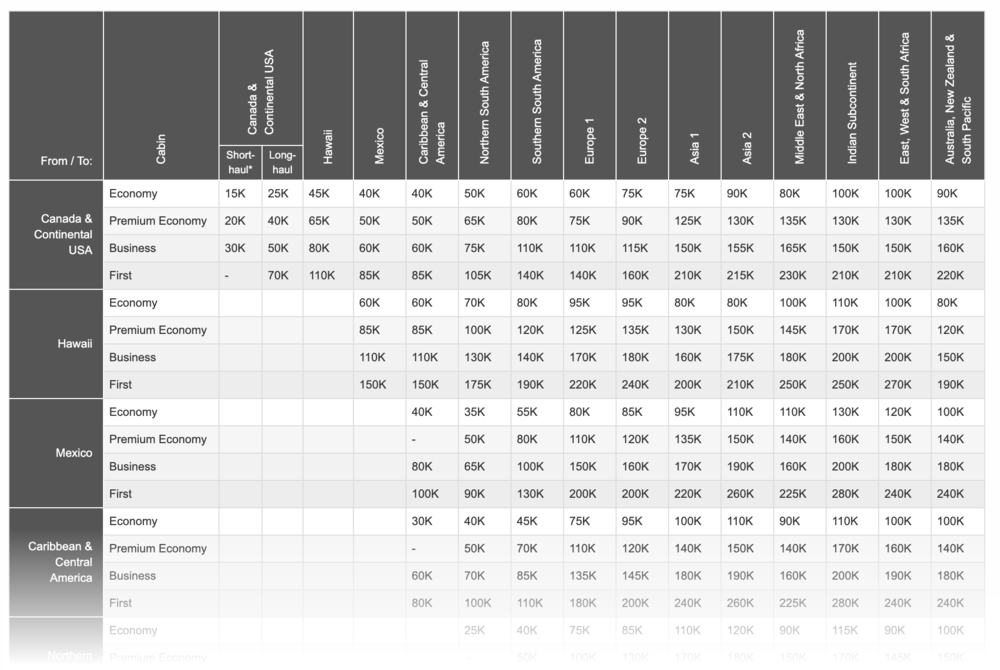
Historically, award chart changes in loyalty programs have been overwhelmingly more negative than positive, especially as the booming co-branded credit card market continues to flood more miles into the system, increasing demand among Miles & Points enthusiasts for a limited supply for award seats.
Within Aeroplan in particular, the first half of the last decade witnessed quite a few rounds of devaluations to the award chart – almost once every other year. But since around 2016 (if I’m not mistaken), the Aeroplan Reward Chart has remained steady at its current levels, which is what leads most observers to expect some inevitable negative changes to the award chart when the new program launches in mid-2020.
Overall, Air Canada recognizes that the ability to redeem miles for aspirational premium flights at competitive rates is something that attracts many members to the program, so in light of that, we can hope that any changes to the award chart are kept within reason.
3. Stopover Policy & Custom Routings
One element of the Aeroplan program that stands head-and-shoulders above its peers is the generous stopover and routing policy. Historically, members have been able to include either two stopovers or one stopover and one open-jaw on round-trip redemptions in what’s known as the Aeroplan Mini-RTW.
(As I mentioned above, the second stopover was temporarily phased out starting last year to accommodate the Amadeus migration, but will be returning with the launch of the new program this year.)
Furthermore, via the call centre, the program has been able to book members on specific customizable routes between their origin, destination, and stopovers, subject to a set of rules, which has allowed members to book their ideal itineraries while avoiding the subpar flight results on the online search engine and the often punitive fuel surcharges (both of which we’ll address further below).
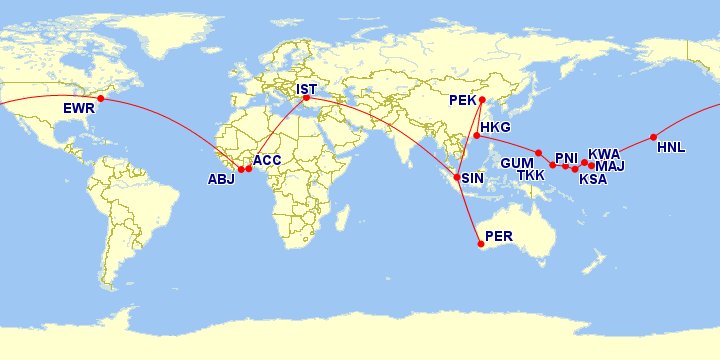
There has been a bit of confusion with respect to this in recent months, and many Aeroplan members have reported being told by call centre agents that they are no longer able to book “segment-by-segment” routings. Late last year, Air Canada confirmed that the custom routing rules have not changed, and that the call centre agents should be able to resume booking these itineraries as they develop more familiarity with the new Amadeus system.
This seems to have played out as described, based on recent data points in the Prince of Travel Elites Facebook group of many Aeroplan members successfully booking segment-by-segment itineraries. While Amadeus does place limits on a few things that used to be possible in the old system (for example, “breaking up” partner flights that follow married segment logic), it does have the capability to book bespoke itineraries on Star Alliance partners, and the agents seem to be growing more comfortable with the process day by day. Prince of Travel Elites member Bogdan M. notes,
Aeroplan positive data points:
My father, Aeroplan Diamond, got to book two trips (one on Friday and one on Saturday) by feeding to the agent segment by segment. Zero complaints, first try both times, almost no wait. Flights were to Europe.
Myself, Aeroplan Black, called today at 12:15 local time, waited 5 minutes on the line, and the first agent was happy to help me book my itinerary to Europe (for June). All in all, less than one hour on the phone and got my tickets issued right away.
This also leads me to believe that the capacity for custom-built itineraries will be maintained in the new loyalty program, because if Air Canada really wanted to implement a rule where “you can only book what you see online”, then they could’ve easily done so at the time of the Amadeus migration.
In reassuring members that custom itineraries are still on the table, and were only challenging to book due to the scale of the system migration, Air Canada’s actions so far speak to a philosophy of fostering value in the upcoming new program rather than stripping it away from members.
When the time comes, I’ll be curious to see exactly what form the stopover and routing policies take, and whether there are any changes to the current scheme of layovers being limited to 24 hours and the total routing being subject to a maximum permitted mileage (MPM).
4. Call Centre
Let’s now move on from the specific policies of the new program, and take a look at a handful of weaknesses that have existed in the current Aeroplan program for a long time. These issues have been widely publicized in national media over the years, so addressing them as of the new program’s launch would be a very easy opportunity for Air Canada to deliver an excellent first impression.
Until about three or four years ago, Aeroplan’s call centre had always suffered from exceedingly long wait times, with many non-status members routinely reporting wait times of one or two hours long.
Then, to their credit, Aeroplan increased staffing at their call centres to address the issue, which led to reasonably short wait times across the board…

…until the Amadeus PSS transition happened. At this point, the call centre agents (understandably) needed a lot more time to deal with a customer’s request compared to before, since they’d be navigating an entirely new backend system, and so the call centre wait times ballooned again.
While the situation still isn’t ideal, there has definitely been some progress in this regard from month to month, and I can only expect the situation to gradually get better as we approach the new program’s launch date of Quarter 3 2020.
At that point, I would hope that the agents are well-equipped with knowledge on the new program and how to make things happen efficiently using Amadeus, having had six months of familiarity with the new system under their belt.
5. Online Search Engine
Another well-documented weakness in the current Aeroplan program is the limited usability of the Aeroplan online search engine in finding the itineraries that a member truly wants.
The most egregious example of this would be the all-too-common occurrence of searching for, say, a Toronto–London flight in business class, and being presented with the rather insulting option of a Toronto–Ottawa flight in business followed by a Ottawa–London flight in economy, all being charged the full business class price.

Then you have the fact that the multi-city search engine cannot handle anything more complex than a simple stopover or open-jaw, the frustrating over-reliance on surcharge-heavy airlines like Air Canada and Lufthansa in the search results, the inability to handle co-terminal airports in either the query or the results, and so on and so forth – I could continue all day.
Air Canada has spoken about their intention to introduce a whole new layer of technology with the launch of the new program, so I think we will almost certainly see significant improvements in the online search engine.
It may be too much to ask for a fully functional wizard that lets you piece together a 16-segment round-the-world trip with long layovers. But at the very least, I’d expect a more streamlined and intuitive search tool with a more robust multi-city option, the capacity to handle co-terminal airports, and some logic in place that ensures that the search engine never surfaces any mixed-cabin itineraries with 90% of the travel distance taking place in a lower cabin of service than what was requested.
6. Fuel Surcharges
And speaking of fuel surcharges (or carrier-imposed surcharges), this is one area that I’ll be keeping an especially keen eye on.
As a third-party loyalty program that merely facilitates the booking process, Aeroplan’s justification for imposing fuel surcharges has always been to essentially wash their hands of the matter: “Oh, the airlines are the ones charging this, and we’re simply passing on the fee to the consumer.”
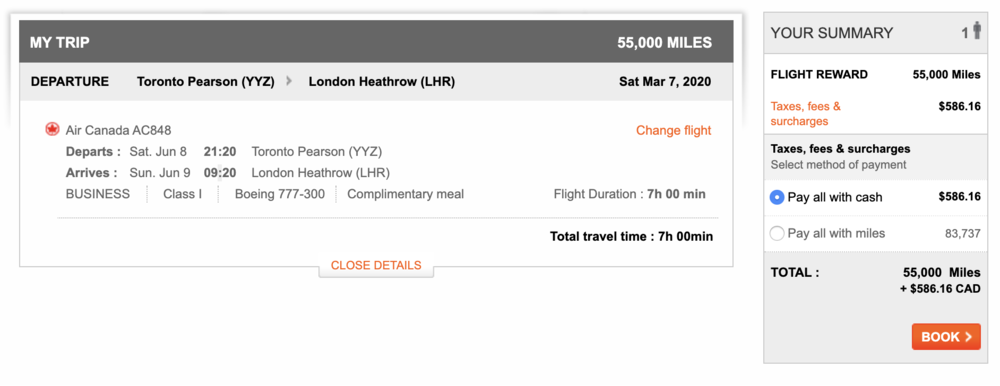
When Air Canada brings everything under one roof with the launch of the new program, this excuse no longer flies. I can’t see how the $500–$1,000 that currently gets imposed on Air Canada flights can be explained in any way other than as a measure to bring in additional revenue while purposefully disadvantaging Aeroplan members, especially given the current status quo where the majority of Star Alliance partners are not subject to fuel surcharges.
Given my cautiously optimistic outlook on the new program, I’m inclined to have faith that Air Canada will take steps to address this pain point, which has been among Aeroplan members’ most pressing concerns for a very long time now.
After all, while seasoned Aeroplan users can always find alternative Star Alliance airlines to fly with, the average traveller shouldn’t have to choose between bringing their three children on a roundabout routing via the United States and Turkey just to get to Western Europe, or paying $500 per person in fuel surcharges for the privilege of flying direct.
7. Elite Status Program
It was announced a while back that the Aeroplan Status program will be phased out as of 2020; after that, however, members were given one additional opportunity to earn status that lasts until the end of 2021, with a shortened status-qualifying window that only spans January and February 2020.

Either way, there haven’t been any further details about how the old Aeroplan status might be folded into the Air Canada Altitude elite status program, or whether the Altitude program might be refreshed at the same time with some new characteristics.
However, a few Prince of Travel Elites members who have Aeroplan Diamond status have reported automatically being bumped up to Air Canada Prestige 25K status, which is now granting them a fuel surcharge waiver on Air Canada flights within North America. So while Air Canada isn’t officially confirmed this yet, it seems likely that existing Aeroplan Diamond members are going to be rewarded with entry-level Altitude status.

(As I mentioned above, it’s not too late if you still want to hop on the Aeroplan Diamond train – you’ll just need to rack up 100,000 status-qualifying Aeroplan miles during the first two months of 2020.)
8. Co-Branded Credit Cards
Finally, let’s consider the marketing side of the new program. I’m definitely expecting to see some aggressive marketing initiatives from the new loyalty program when it launches, and the most significant marketing angle revolves around the new and refreshed co-branded credit cards from TD, CIBC, and American Express.
We know that the trio of issuers have invested very large sums of money to revamping their credit card lineup, and I’m sure we’ll all have a close eye on how the new credit card offerings allow us to rack up miles in the new program – things like the new signup bonuses, bonus spending categories, annual fee price points, etc.
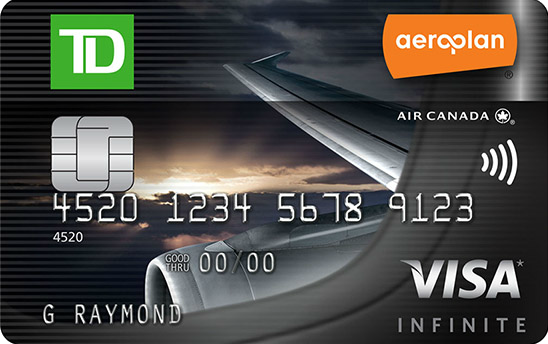
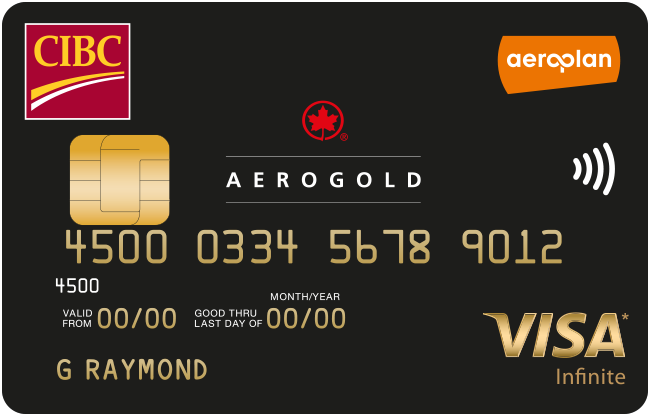
Beyond that, however, I also get a sense that we can expect to see a great deal of innovation in terms of card features as well, and that could potentially be even more exciting – things like rewards associated with spending thresholds, annual renewal perks, or integration of elite status with credit cards could all be on the table.
For now, I’m often asked whether it makes sense to apply for the current Aeroplan credit card offers or wait until the new program is launched. Since we know that miles will be honoured 1:1 in the new program, there’s no harm in applying for the currently available cards, especially as there are some very good offers available – like the TD Aeroplan’s offer of 30,000 miles with First Year Free, and the CIBC Aerogold’s offer of 20,000 miles (and potentially up to 35,000 miles), with First Year Free as well.
Conclusion
The launch of a brand-new edition of Canada’s largest frequent flyer program promises to be one of the most exciting occasions in the Miles & Points space this year.
As the Q3 2020 timeline approaches, we’ll all be keeping a close eye on the eight elements of the new program that I’ve outlined above, which could collectively make the difference between a strong program that actively rewards its most loyal and most engaged members and an anticlimactic outcome that results in less value in the program compared to before.
As I’ve mentioned before, based on what we know so far, I’m cautiously optimistic that the new program can continue to deliver outstanding value for the dedicated travellers among us while also doing a better job of providing the average Canadian with the rewards they want and shedding some of the negative reputation that the old Aeroplan program had built up over the years.
Can Air Canada deliver on this? We’ll find out soon enough.




















Quick question I have had Diamond aeroplan status for two years now and have not been ‘bumped up’ to silver status. Do you have to call Air Canada to get that? Should really be the same for everyone with that status.
I hope eliminate fuel surcharge on air canada award redemption. Having a small devaluation in order to fly air canada might be worth it…within reason
Do you think there is any advantage to holding onto branded TD and CIBC aeroplan cards with the idea there might be a "thank you bonus" when the new program/cards launch?
" a few Prince of Travel Elites members who have Aeroplan Diamond status have reported automatically being bumped up to Air Canada Prestige 25K status" – I am also in this boat. What exactly does it mean?
I would think it mean that they will eliminate Aeroplan status and give some air Canada status this years to avoid complain from black and diamond Aeroplan member.
I am still waiting to see where I end up. I can access my "new" Air Canada account through aircanada.ca and using my aeroplan login credentials and I do see the correct mileage but no status yet. I only currently have silver status so hoping it leads to something.